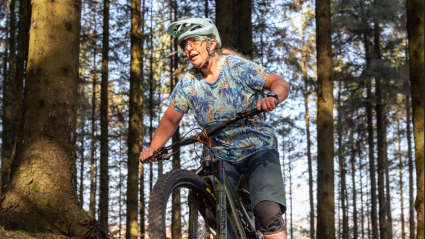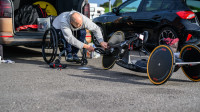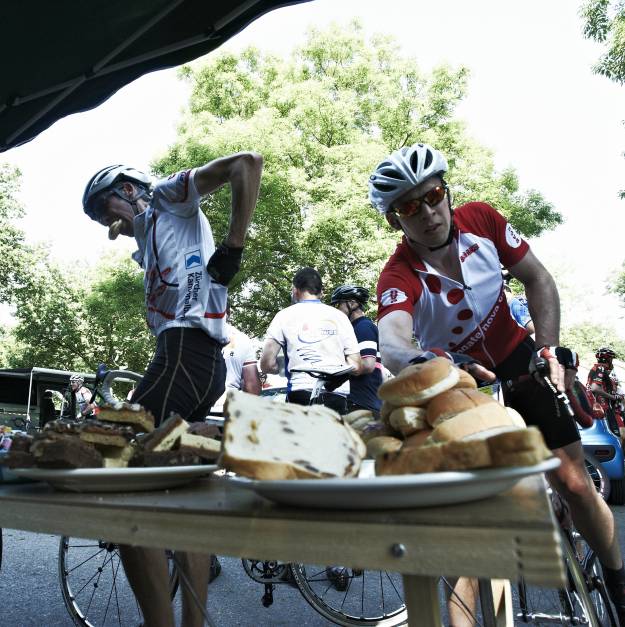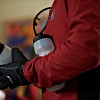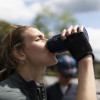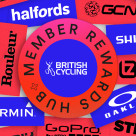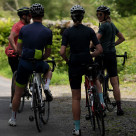Knowledge Level: Intermediate
Whether it’s from chatting to club mates, reading magazines or spending time on internet forums, myths and misunderstandings about cycling training abound. In this article we debunk five classic winter cycling training myths.
1) The fat burning zone
The so-called fat burning zone and its application to training and weight loss is a classic case of a piece of science being misinterpreted. At lower intensities, your body will derive a higher proportion of its energy from burning fat and so, for fat loss, people were recommended to train at these low intensities. The problem is, by working out at these low levels, the actual number of calories you burn in a typical training session will be relatively small. Train harder and, although you’ll mostly be burning carbohydrates, you’ll get through a lot more calories. At the simplest level for fat loss, consistent net calories in vs calories out is the key thing, regardless of the form in which those calories are taken in or burned.
2) Fat adaptation
Not so much a myth but a case of a good thing taken to extremes. Fat adaptation refers to a riders ability to tap their fat reserves as fuel. This is a key aspect of endurance fitness as, the more you’re able to utilise fat, the longer you’ll spare your body’s glycogen stores and be less reliant on taking on and processing additional carbohydrates. Endurance training will develop your fat adaptation and you can give it a helping hand with some carbohydrate fasted training.
However some riders will proudly declare their fat or keto adapted credentials and perform all of their rides without carbohydrates or on limited carbohydrates. The problem with this approach is that, no matter how well fat adapted you are, fat is the body’s diesel and will only fuel relatively steady state activity. The moment the pace rises or a gradient kicks in, the body will require carbohydrates. Without carbohydrates, quality and intensity will always be compromised.
So, for long and steady endurance style rides, you can experiment with carbohydrate fasted training. However, for higher intensity workouts, harder efforts within a long ride and whenever you want to ride hard, don’t skimp on the carbs.
3) Long and steady over winter
Strict long and steady winter base training can be effective for professional riders, who can log 30-hour plus weeks. The sheer volume provides the training stimulus and gives them the deep base of endurance fitness they require for the heavy racing load they have to contend with in-season. However, even for pros, the concept of just doing steady work over the winter has largely fallen out of favour.
For non-pros, who are having to juggle work, family and other commitments and can only probably manage 5-15 hours weekly on the bike, sticking purely to low intensity is a waste of precious training time. Although trying to get out at the weekend for a longer and steadier endurance focussed ride is important, don’t be afraid of throwing in some higher intensity efforts. Similarly, for a couple of shorter mid-week rides, ramp up the intensity. This is the structure we use for the majority of the British Cycling Digital Training Plans.
4) Turbos are a soft option
Using an indoor trainer isn’t a soft option for riders who don’t like the cold or wet. They’re a way of getting unbeatable, time effective, controlled and focused workouts. Without the distraction of other road users, having to pause for junctions and varying gradients, you can do exactly the intensity you’re targeting for precisely the right duration. We’re not suggesting that you do all of your winter riding indoors, try to get out for your longer rides, but, for those quality midweek sessions, an indoor trainer is hard to beat.
Download our free Ultimate Guide to Indoor Training eBook
5) High reps and low weight in the gym
The winter can be a great time to hit the gym and do some strength work. It can improve your cycling, help to safeguard you against injury and confers a number of other health benefits. However, many cyclists make the mistake of adopting a high rep/low weight approach as they think it’ll develop endurance and won’t cause them to gain muscle bulk. Unfortunately, this is untrue on both counts. Endurance for cycling is best developed by cycling whereas the gym is where you go to get stronger and produce more force. The best way to develop force is to lift a relatively heavy weight for a smaller number of reps.
From an endurance perspective, sets of 20 or even 50 reps aren’t going to come anywhere near the muscular endurance demands of cycling where you’re doing 90+ pedal rotations each minute. Low weights, which allow you to perform sets of 20+ reps, will also have almost have no strengthening benefits.
Lifting relatively heavy weights (sets of 8-10 reps), especially in combination with cycling training, won’t cause you to put on large amounts of bulk but it will stimulate strength gains. Don’t be afraid of lifting heavy but, if you’re unsure of technique, do get some qualified instruction.


